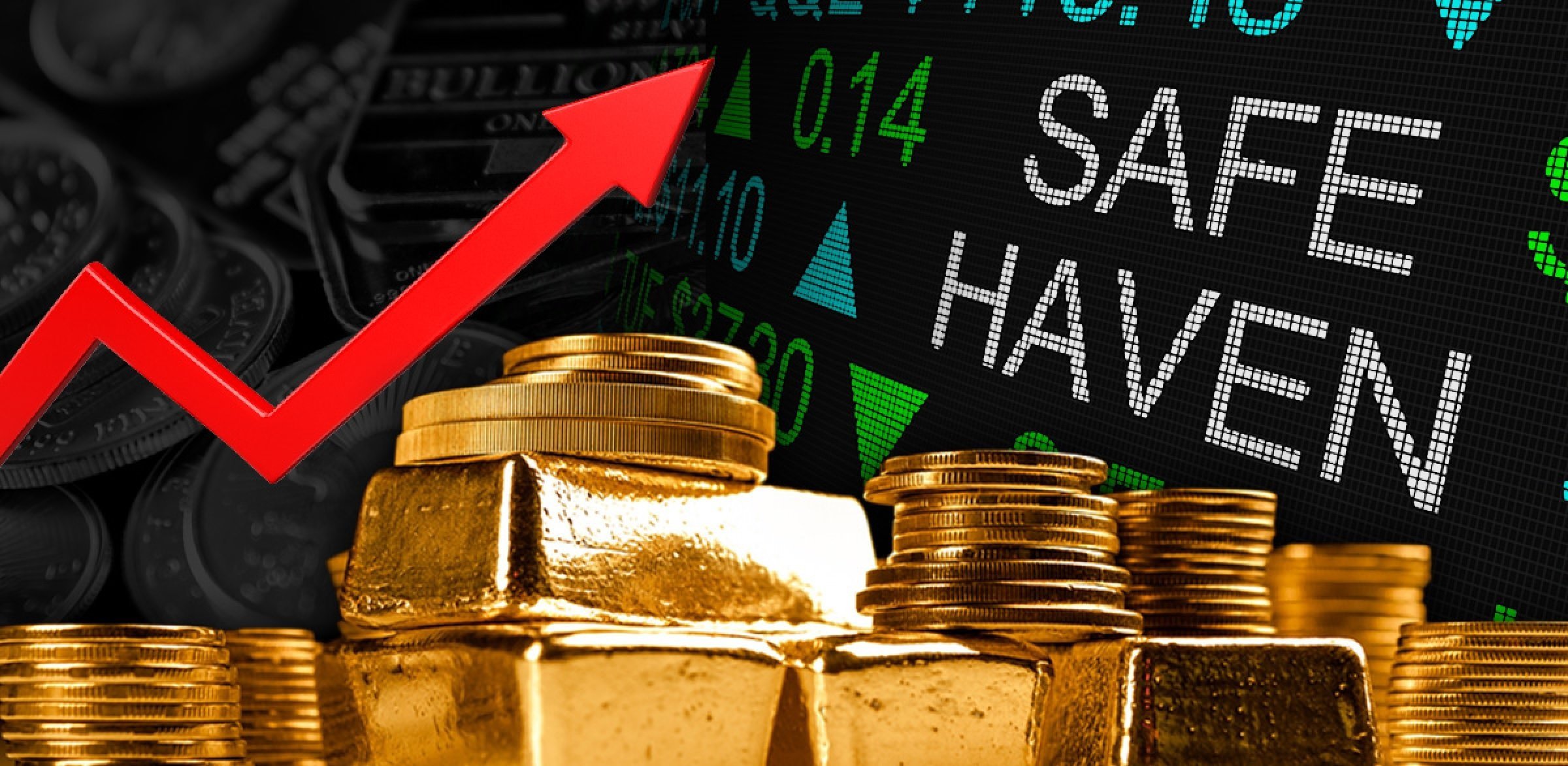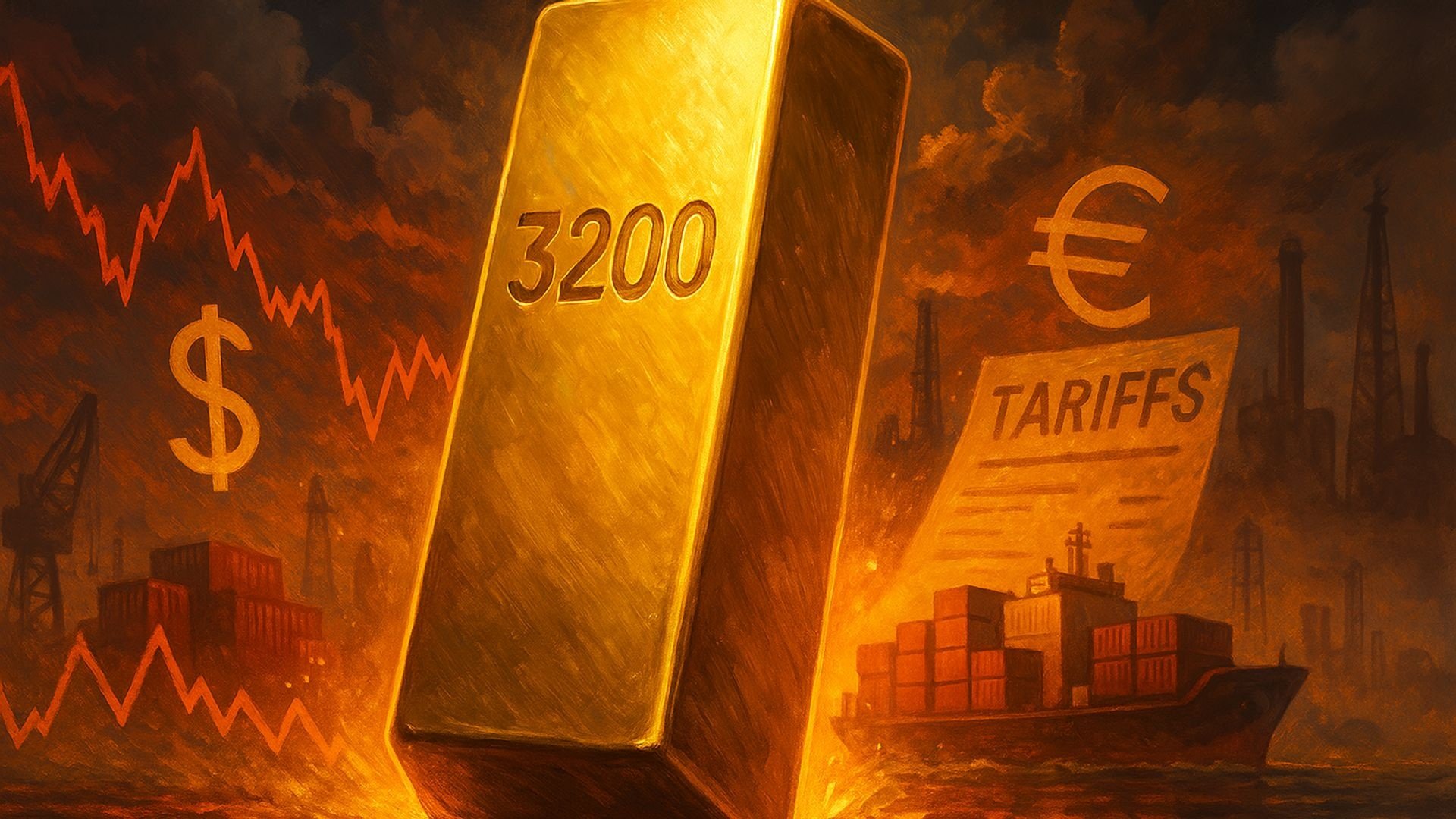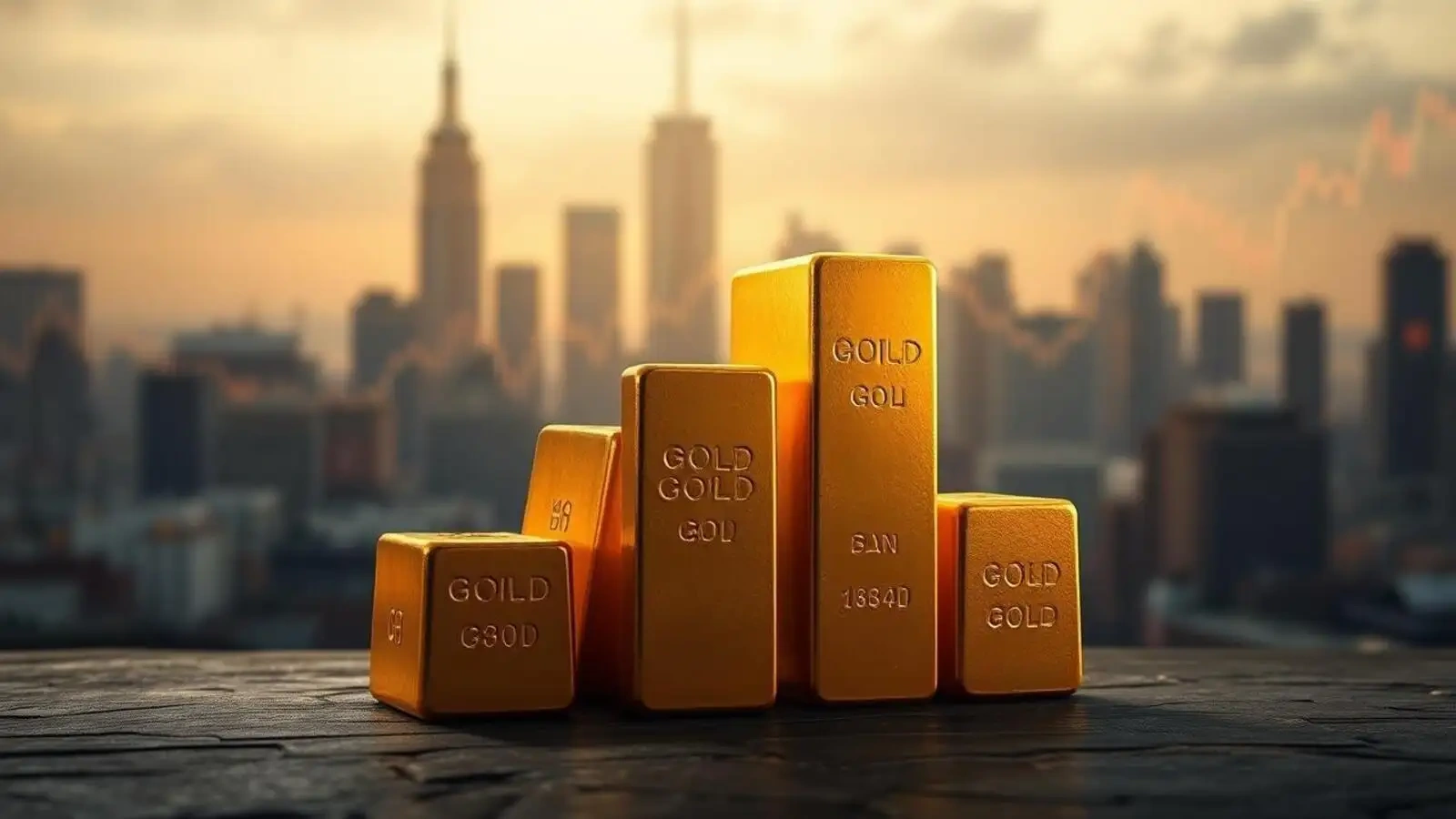The world is witnessing a quiet but fierce race. Global central banks are ramping up their gold holdings at a pace not seen in decades. This move comes amid rising geopolitical instability, concerns about persistent inflation, and potential policy shifts from major powers, particularly in tariff policies.
According to the latest data from the World Gold Council (WGC) and Reuters, 2024 saw record net purchases by central banks, totaling over 1,000 tons, with the last quarter alone reaching 333 tons, a 54% increase compared to the same period the previous year.
Why has gold, an ancient metal, become the focal point in the digital finance era? Is this a shrewd defensive strategy by nations against the impending economic storm, or is this "craze" actually sowing the seeds of new systemic risks?
Gold - a timeless sanctuary of aura.
The history of gold is intertwined with the history of human civilization and economy. Beyond its value as jewelry or industrial goods, gold has established itself as the ultimate "safe haven" whenever the world is in turmoil. It's no coincidence that gold was chosen. Its unique physical properties (non-oxidizing, easily divisible, easy to transport) and relative scarcity have made it a reliable store of value and medium of exchange for thousands of years.
Looking back at important historical milestones, the role of gold becomes even clearer:
The Gold Standard Era: From the 19th to the early 20th century, many countries pegged the value of their currencies to a fixed amount of gold. This system, despite its limitations, created an era of exchange rate stability and fostered international trade. The collapse of the Bretton Woods system in 1971, when the US abandoned the convertibility of USD to gold, marked the end of the official gold standard, but did not diminish the psychological and strategic appeal of the metal.
The Great Depression (1929-1939): As confidence in the banking system and paper money collapsed, people and governments alike flocked to gold as a lifeline. Gold hoarding became a national priority to preserve wealth and stabilize the economy.
World War II (1939-1945): Gold was not only a means of financing massive military campaigns but also a strategic reserve asset, helping nations maintain economic strength and prepare for post-war reconstruction.
The oil crisis and inflation of the 1970s: The oil price shock, coupled with loose monetary policy, pushed global inflation to runaway levels. The US dollar depreciated sharply after the Nixon Shock. In this context, the price of gold soared as investors sought to protect their assets from inflationary erosion.
The 2008 global financial crisis: The collapse of Lehman Brothers and the threat of financial system collapse caused investors to lose faith in paper assets. Gold once again shone brightly. According to the US Money Reserve, the price of gold surged dramatically by approximately 150% from 2007 to 2011, solidifying its role as a "safe haven" during the financial earthquake.
These historical lessons reveal a pattern: confidence in gold is inversely proportional to confidence in the fiat currency system and economic and political stability. Therefore, it is not surprising that, in the current context, gold is once again being considered strategically by central banks.
Gold has solidified its position as the ultimate "safe haven" whenever the world is in turmoil (Illustration: CyprusMail).
The current wave of gold buying: A storm brewing beneath the calm surface.
Amid global economic instability, many countries have increased their gold purchases as a financial protection strategy. In 2024, central banks significantly boosted their gold purchases, totaling over 1,000 tonnes, according to the World Gold Council. Notably, in the last quarter of 2024, gold purchases increased by 54% year-on-year, reaching 333 tonnes.
China is a prime example, having continuously purchased gold for 18 months up to May 2024, although the exact quantities were not disclosed. After a six-month hiatus, the PBOC resumed net gold purchases in November 2025. By the end of March 2025, China's gold reserves were projected to be 73.7 million ounces.
Similarly, Türkiye and India are both estimated to have purchased around 100 tonnes of gold each. Türkiye increased its gold reserves to diversify away from its reliance on the US dollar, while India views gold as an effective hedge against inflation. Poland also stood out with its purchase of 90 tonnes of gold, aiming to raise the proportion of gold in its national foreign exchange reserves to 20%, according to the World Gold Council.
Gregory Shearer from JP Morgan commented: "We maintain our long-term bullish outlook for gold as the most likely macroeconomic scenarios for 2025 remain bullish for the metal." He also emphasized that increased political uncertainty, particularly from Trump's tariff policies, will continue to drive demand for gold.
The World Gold Council forecasts that demand for gold from central banks will exceed 500 tonnes in 2025, contributing 7-10% to gold price performance.
Decoding the motivations and downsides of the "gold hoarding" trend.
Why are central banks acting in unison like this? There are three main drivers behind this trend:
Diversifying reserves away from the US dollar: China, according to Newsweek, has been actively buying gold to reduce its dependence on the US dollar. Lina Thomas from Goldman Sachs notes that central banks in emerging countries, such as China, have increased their gold purchases since 2022 due to concerns about US financial sanctions and public debt.
Protection against inflation: Trump's economic policies, such as tax cuts and increased government spending, could cause inflation. Gold, as an inflation hedge, becomes an attractive option. The US Money Reserve recorded a 25% increase in gold prices during the Covid-19 recession of 2020, demonstrating gold's ability to protect its value.
Geopolitical risk: Geopolitical tensions lead countries to seek assets unaffected by sanctions or political instability. Gold, as an "unknown" asset, fulfills this requirement.
Although gold purchases benefit individual countries, this trend poses significant risks to the global economy:
Reduced liquidity in the financial system: Gold does not yield returns and is as difficult to convert as government bonds. If too much global reserves are poured into gold, central banks may struggle to respond to economic shocks, reducing liquidity in the financial system.
Rising gold prices put financial pressure on countries: Increased demand for gold has pushed prices to record highs, exceeding $3,200 per ounce. This puts financial pressure on countries with limited budgets.
Risk of gold shortage: If demand exceeds supply, the gold market could face a shortage, leading to sharp price fluctuations. Fortune Europe reports that the waiting time for withdrawing gold from the Bank of England has increased eightfold due to concerns about Trump's tariffs.
Opportunity cost: Gold does not yield returns like stocks or bonds. Prioritizing gold could cause central banks to miss out on investment opportunities in income-generating assets, reducing the effectiveness of reserve management.
The World Gold Council warns that if demand for gold from central banks falls below 500 tonnes, gold prices could come under downward pressure, adding further instability to financial markets.
Amidst tariff storms and escalating US-China trade tensions, gold continues to rise, surpassing the $3,200/ounce mark (Illustration: Kitco News).
Individual investors and gold: Stay cautious amidst the "fever"
Witnessing central banks aggressively buying gold, many individual investors have also been swept up in the desire to own this precious metal. However, it is crucial to clearly distinguish between a nation's strategy and an individual's strategy.
Why do central banks buy gold? On a macroeconomic level, accumulating gold is a sound strategy. Gold is not affected by the policies of any country, helping to reduce the risk from the depreciation of the USD or economic sanctions.
In the context of Trump's policies potentially destabilizing the global economy, gold has become a tool to protect national interests. The World Gold Council emphasizes that gold is a "strategic asset" that helps countries maintain long-term economic stability, especially during inflation or financial crises.
However, for individual investors, over-investing in gold is not the optimal choice because:
High price volatility: Gold prices can fluctuate sharply in the short term. For example, after the US election, the price of gold fell from $2,800/ounce to $2,618/ounce, indicating volatility risk. Since the beginning of the year, the price of gold has increased from $2,600/ounce to nearly $3,300/ounce, a very high increase. In just the past week, the world gold price has increased by approximately $270/ounce. Therefore, if the situation stabilizes, a drop of $200-300/ounce in a week would be normal.
Opportunity cost: Investing too much in gold means missing out on opportunities to invest in higher-yielding assets such as stocks or real estate. In the long term, stocks and bonds typically deliver superior returns compared to gold.
Financial experts advise that gold should only account for 5-10% of an investment portfolio for diversification and protection against inflation, rather than becoming the primary asset.
Individual investors may consider gold ETFs or mutual funds that track gold prices, which offer lower storage costs and increased liquidity compared to physical gold. Lina Thomas from Goldman Sachs warns that individual investors need to be cautious about gold price volatility, especially when competing with central banks and ETFs.
While accumulating gold is reasonable from a macroeconomic perspective, experts advise individual investors to exercise caution and avoid overinvesting in gold (Illustration: TIL Creatives).
The trend of central banks increasing their gold purchases, especially after Trump's re-election and the imposition of reciprocal tariffs on more than 180 countries, reflects deep concerns about economic and geopolitical instability. Many countries are seeking to protect their economies by diversifying reserves and reducing their dependence on the USD.
The World Gold Council forecasts that demand for gold from central banks will exceed 500 tonnes in 2025, positively impacting gold prices. Goldman Sachs also recently raised its gold price forecast to $3,700 per ounce by the end of 2025, thanks to strong demand from central banks and ETFs.
Amidst a volatile global economy, the role of gold will continue to be a key topic of interest. Will gold be a safe haven or a new source of instability? The answer depends on how countries and investors manage this asset in the coming years.
Source: https://dantri.com.vn/kinh-doanh/tru-an-trong-vang-cai-gia-that-su-cua-lan-song-gom-vang-toan-cau-20250416102839502.htm





![[Photo] Prime Minister Pham Minh Chinh presides over a meeting on private sector economic development.](/_next/image?url=https%3A%2F%2Fvphoto.vietnam.vn%2Fthumb%2F1200x675%2Fvietnam%2Fresource%2FIMAGE%2F2025%2F12%2F20%2F1766237501876_thiet-ke-chua-co-ten-40-png.webp&w=3840&q=75)



![[Photo] Prime Minister Pham Minh Chinh presides over the conference announcing the establishment of the International Finance Centre in Vietnam.](/_next/image?url=https%3A%2F%2Fvphoto.vietnam.vn%2Fthumb%2F1200x675%2Fvietnam%2Fresource%2FIMAGE%2F2025%2F12%2F21%2F1766309817714_ndo_br_dsc-3400-jpg.webp&w=3840&q=75)


























































































Comment (0)